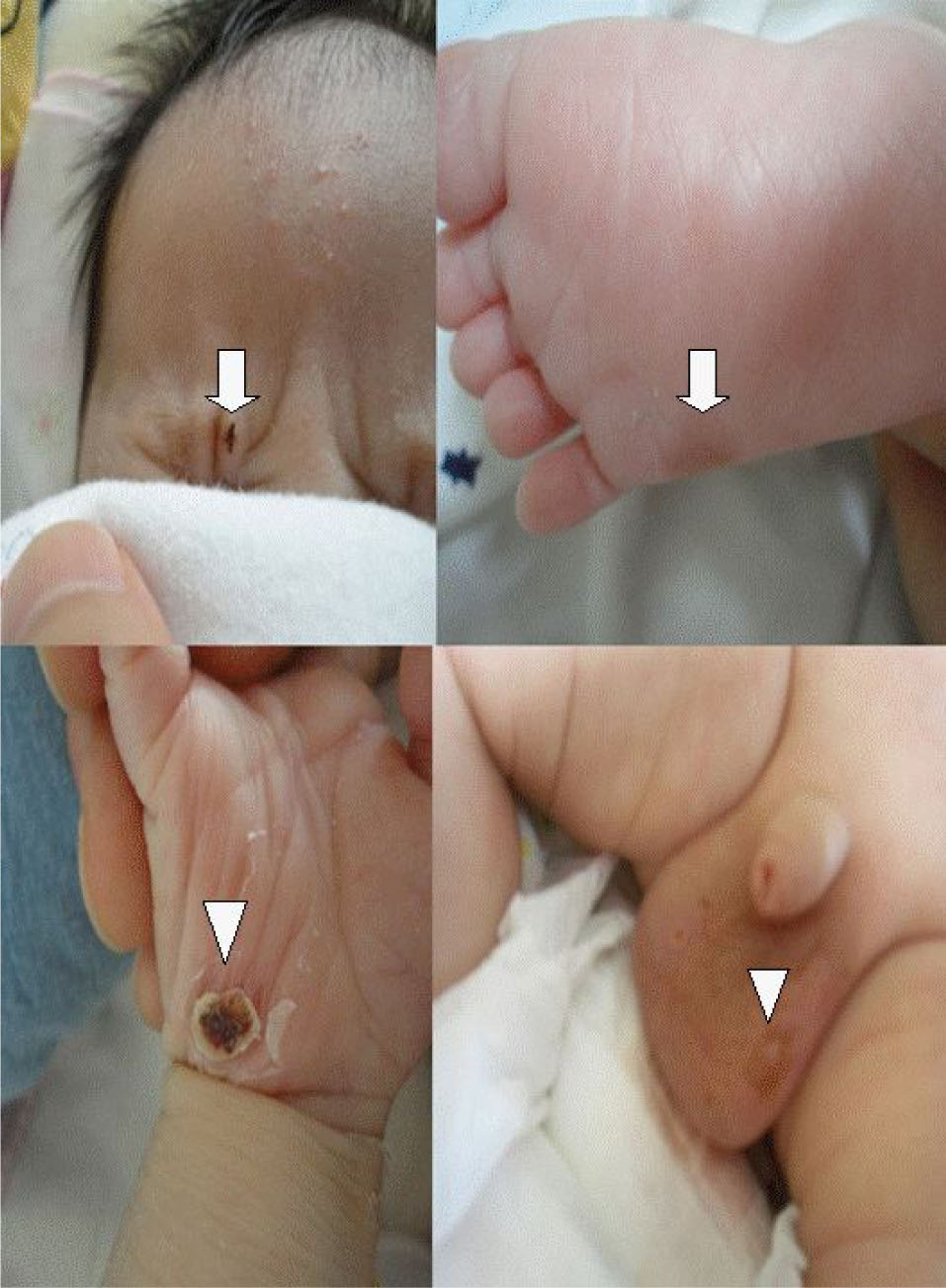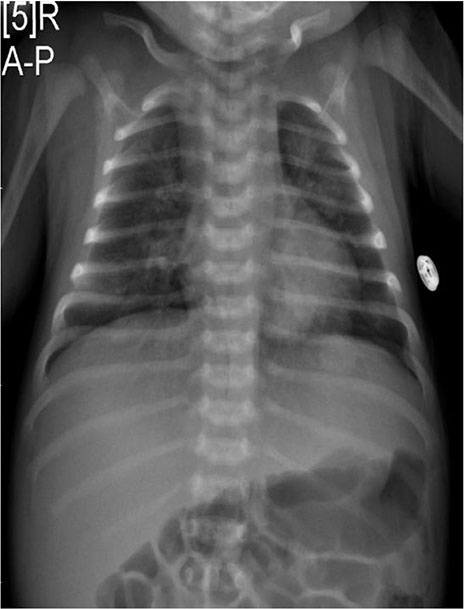Korean J Pediatr Infect Dis.
2014 Apr;21(1):65-70.
Congenital Syphilis: An Uncommon Cause of Gross Hematuria, Skin Rash, and Pneumonia
- Affiliations
-
- 1Department of Pediatrics, Medical College, The Catholic University of Korea, Seoul, Korea. hhkped@catholic.ac.kr
Abstract
- Although congenital syphilis can be prevented with prenatal screening, the disease remains problematic. Currently, there are no cases that describe hematuria and pneumonia related to congenital syphilis. We report a case of congenital syphilis that involved nephrotic syndrome and pneumonia alba in a 22-day-old male infant whose mother did not receive adequate prenatal care. The congenital syphilis diagnosis was confirmed with a serologic test and the patient recovered with penicillin treatment. Clinical findings may be subtle in neonates and delayed recognition occurs frequently, thus complete prenatal screening is critical for congenital syphilis prevention. Immediate serologic testing should be performed to obtain a differential diagnosis if an infant is delivered by a mother that has not received appropriate prenatal examinations.
Keyword
MeSH Terms
Figure
Reference
-
1. Cam H, Taytan Y, Aji DY, Bilgi Z, Aydemir E, Demirkesen C. Congenital syphilis presenting with nephrotic syndrome and leucocytoclastic vasculitis. J Eur Acad Dermatol Venereol. 2004; 18:484–486.
Article2. Roh EJ, Hong KS, Chung EH, Chang YP, Lee YS. Two cases of pneumonia alba in congenital syphilis. Pediatr Allergy Respir Dis. 2009; 19:300–306.3. Vural M, Ilikkan B, Polat E, Demir T, Perk Y. A premature newborn with vesiculobullous skin lesions. Eur J Pediatr. 2003; 162:197–199.
Article4. Niemsiri S. Congenital syphilitic nephrosis. Southeast Asian J Trop Med Public Health. 1993; 24:595–600.5. Lago EG, Vaccari A, Fiori RM. Clinical features and follow-up of congenital syphilis. Sex Transm Dis. 2013; 40:85–94.
Article6. O'Regan S, Fong JS, de Chadarevian JP, Rishikof JR, Drummond KN. Treponemal antigens in congenital and acquired syphilitic nephritis: demonstration by immunofluorescence studies. Ann Intern Med. 1976; 85:325–327.7. Suskind R, Winkelstein JA, Spear GA. Nephrotic syndrome in congenital syphilis. Arch Dis Child. 1973; 48:237–239.
Article8. Edell DS, Davidson JJ, Mulvihill DM, Majure M. A common presentation of an uncommon cause of neonatal respiratory distress: pneumonia alba. Pediatr Pulmonol. 1993; 15:376–379.
Article9. Kim DK, Lee JB, Oh KK. Congenital syphilis: radiologic findings of early congenital syphilis. Korean J Dermatol. 1985; 23:39–44.10. Han JH, Kim NS, Chung WK. Clinical observation of congenital syphilis. J Korean Pediatr Soc. 1979; 22:518–524.11. Moon KS, Kim JD, Shin MH, Oh JS. A case of nephritic syndrome in congenital syphilis. J Korean Pediatr Soc. 1980; 23:950–955.12. Park HS, Moon SJ, Lee SY, Lee KS. The clinical observation of congenital syphilis. J Korean Pediatr Soc. 1979; 22:702–708.13. Miller R, Karras DJ. Commentary. Update on emerging infections: news from the Centers for Disease Control and Prevention. Congenital syphilis--United States 2003-2008. Ann Emerg Med. 2010; 56:296–297.14. Center for Disease Control and Prevention. 2011 Sexually transmitted disease surveillance. accessed July 7, 2013. Available from URL: http://www.cdc.gov/std/syphilis2011/Syphilis-2011-All-Profiles.pdf.



